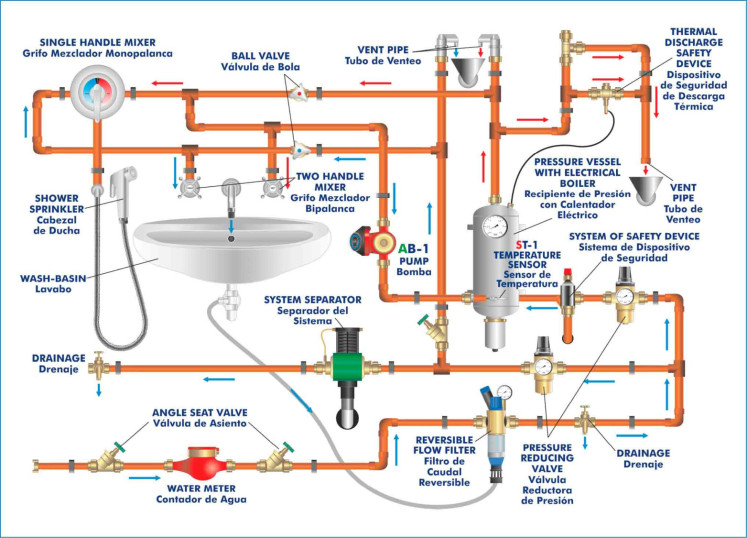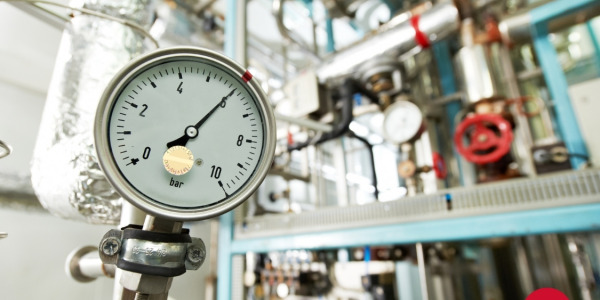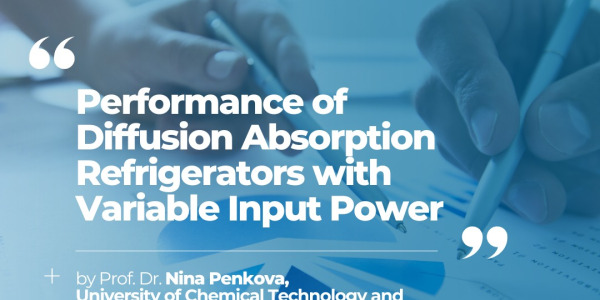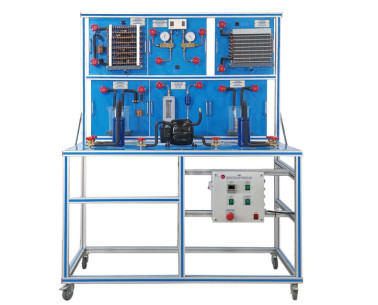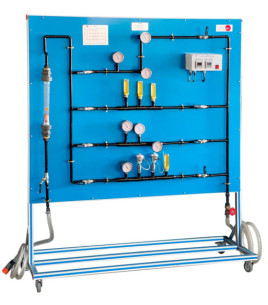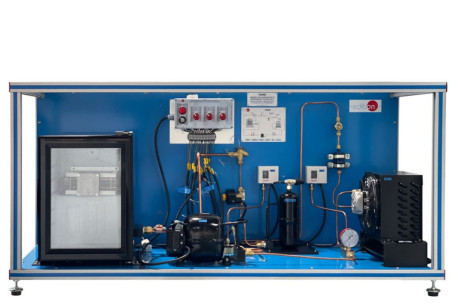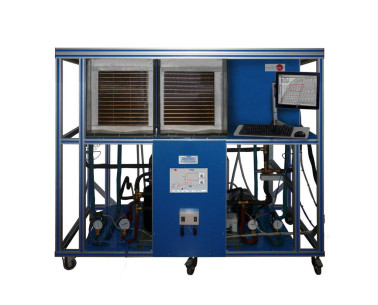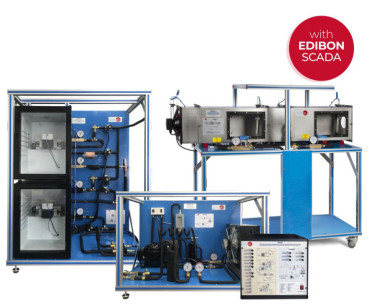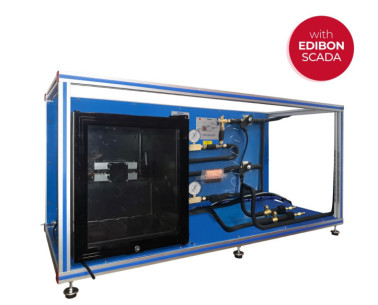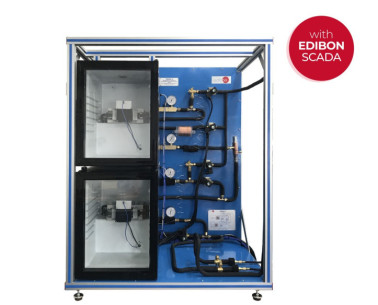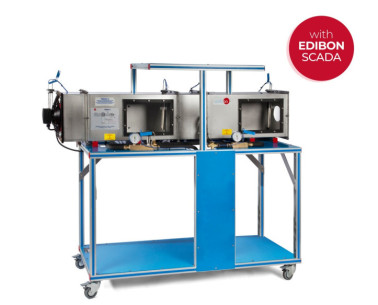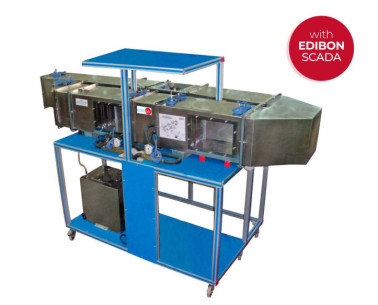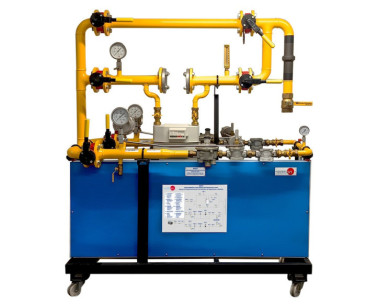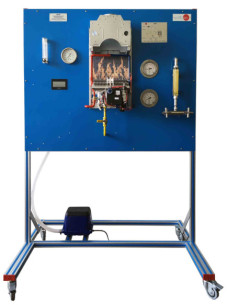TIAP Unité d'Installation d'Eau Potable
SYSTEMES INNOVANTS
The Drinking Water Installation Unit, "TIAP", has been designed to demonstrate domestic water heating from the cold water supply.
Laboratories
NOUVELLES LIÉES
Description Générale
The Drinking Water Installation Unit, "TIAP", has been designed to demonstrate domestic water heating from the cold water supply. A typical domestic drinking water system is attached to the front panel of the unit. The unit includes the most common elements of a drinking water installation and is designed for training in the plumbing sector. The unit is divided into three sections: cold water system, hot water system and drainage system.
The water inlet to the system is regulated with two seat valves and the flow rate entering the installation is measured with a water meter. The water then passes through a reversible flow filter and is divided into two pressure reducing valves. The first line is directed on the one hand to the two-lever faucet and single lever mixer lever to come out as cold water, on the other hand it goes to the separator of the system and ends in the drainage system. The second conduit passes through a safety device and is introduced into the pressure vessel with heater, where the water is heated and driven by a pump to the two-lever and single lever mixer taps.
The pressure vessel with heater allows to control the internal pressure with a manometer and the temperature with a thermocouple, it can also be regulated through a display. The hot water circuit includes safety devices (thermal discharge safety device, safety device system, non-return valve, system separator and vent pipes). These show how drinking water installations are protected against the flow of wastewater.
The drainage system is located at the back of the equipment. Collect the remains of water from the vent pipes, the water discharged with the thermal discharge safety device, the safety device system, the waste water from the reversible flow filter and the system separator and the water collected from the basin.
Des exercices et pratiques guidées
EXERCICES GUIDÉS INCLUS DANS LE MANUEL
- Familiarization with the most common components in a drinking water installation.
- Study of the function and operation of a water meter.
- Study of the function and operation of a pressure reducing valve with a reversible flow filter.
- Study of the function and operation of a pressure reducing valve without a reversible flow filter.
- Study of the function and operation of a system separator.
- Study of the function and operation of a non-return valve.
- Study of the function and operation of a pressure vessel with heater.
- Study of the function and operation of a circulating pump.
- Study of the function and operation of a safety device system.
- Study of the function and operation of a thermal discharge safety device.
EQUIPEMENT COMPLEMENTAIRE
Unité de Formation pour Mesures de Température
Unité de Montage et d'Entretien dans les Installations de Réfrigération
Unité de Régulation de la Puissance et des Défauts dans les Installations de Réfrigération, Contrôlée par Ordinateur (PC)
Unité Modulaire de Réfrigération et de Climatisation, Contrôlée par Ordinateur (PC)
Modèle de Réfrigération Domestique
Modèle d'Installation de Réfrigération Avec Étape de Réfrigération et de Congélation
Modèle de Système de Climatisation Simple pour Le Refroidissement de Pièces
Modèle Complet de Système de Conditionnement d'Air
Unité de Station de Mesure et de Régulation
Unité d'expérimentation de Chauffe-eau Instantané à Gaz
Unité Expérimental avec Brûleur à Gaz à Tirage Forcé
Qualité
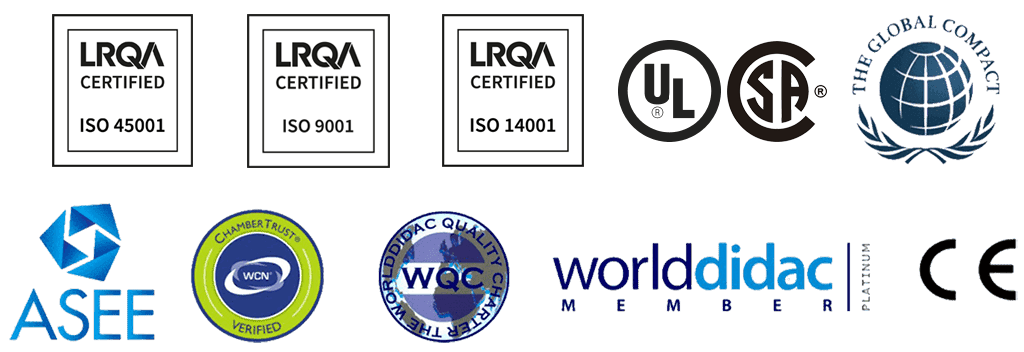
Service après vente

 Préférences sur les cookies
Préférences sur les cookies

